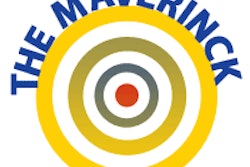
Ethics are not a favorite topic of most radiologists and physicians at large. They avoid discussing and even thinking about moral reality. We all know that we are physicians, we are radiologists, and we do our patients good. We apply moral rules and judgments to our and our colleagues' practice of medicine and insist on playing by established ethics, don't we? Or is this self-delusion?
In an article titled "The rise of the machines," I recently read:
Is it too late to wake up? Are [we] like the slumbering passengers of the Titanic, on a huge vessel too committed and going too fast to avoid the huge iceberg, now visible against the night sky, just starting to block the stars in their ship's path? Tragically, in a moral climate still ruled by passion rather than morally aware reason, it may take the sounds of the crash itself.1
For many years, I have co-organized a biennial roundtable meeting on ethics in medicine, mostly focused on medical imaging. Commonly, the meeting deals with the foundations of medical ethics and, in general, unethical behavior. The definition is broad and doesn't necessarily follow any prescribed legal, religious, or philosophical code. The number of participants is small -- not necessarily because the organizers don't want more attendees, rather because the interest in the topic seems to be limited. Thus, it's an "exclusive" meeting.
 Dr. Peter Rinck, PhD, is a professor of diagnostic imaging and the president of the Council of the Round Table Foundation (TRTF) and European Magnetic Resonance Forum (EMRF).
Dr. Peter Rinck, PhD, is a professor of diagnostic imaging and the president of the Council of the Round Table Foundation (TRTF) and European Magnetic Resonance Forum (EMRF).
A former Spanish convent converted into a small hotel was last November's conference venue, which was very fitting, some people stated. The topic was: "Ethics in medical imaging -- How can one re-implement ethical behavior?" For the first time, the meeting moved from theoretical ethics to applied morality. The question in the title must not be seen as an incivility, claiming moral superiority and implying a division of the medical world into two camps: the good and ethical ones who might also be the victims, and the unethical villains. Rather, the subject was chosen because there was a general understanding that parts of medical ethics have been lost, or is completely unknown to physicians and other medical personnel in hospitals and private practice. Often, the terms "duty" or "obligation" seem to be forgotten. What can we do about it?
The discussion went all the way back to the mere basics: Primum non nocere (first, do no harm). Everybody seems to agree upon this maxim of medicine, a habit that should be the central thought of every physician. Beyond this, what is a good habit and what is not, and can morals be objective?
Ethics and moral insights are not built on a foundation of steel-enforced concrete. We have to accept that ethical behavior is not final or absolute, and that it changes over time, across cultures, and due to people's insights. It improves in dialogue, not by diktat.
Is there an easy way to establish simple ethics? Ethical behavior refers to everybody in the department, not only to the head and the other radiologists. Are there incentives to strengthen behavioral and working morale?
I liked the solution of a Spanish department head: After every good year, he plants a tree close to the hospital, together with his entire staff. It's an action that acknowledges a sense of collective success, creating something positive in a group. It shows that everybody is proud of their achievements and, at the same time, to pragmatically enforce common ethics.
We should adapt such ideas to our own environment, wherever we work. Otherwise the prediction of an unhappy ending could be the same as in the article cited above: "Of course, by then, it would be far too late for Americans to alter their fate."
You could replace "American" with "radiologists." However, the article is not about radiology but about the impact and ethics of drone attacks on human life, published in -- of all places -- Military Review, a journal of the U.S. Army and the U.S. Department of Defense. You don't think the topics are comparable? Think twice. The paper is worthwhile reading. It would be enlightening to find such an opinionated article in a radiological journal.
Dr. Peter Rinck, PhD, is a professor of diagnostic imaging and the president of the Council of the Round Table Foundation (TRTF) and European Magnetic Resonance Forum (EMRF).
Reference
Pryer DA. The rise of the machines. Military Review. 2013; 93(2):14-24.
The comments and observations expressed herein do not necessarily reflect the opinions of AuntMinnieEurope.com, nor should they be construed as an endorsement or admonishment of any particular vendor, analyst, industry consultant, or consulting group.



















